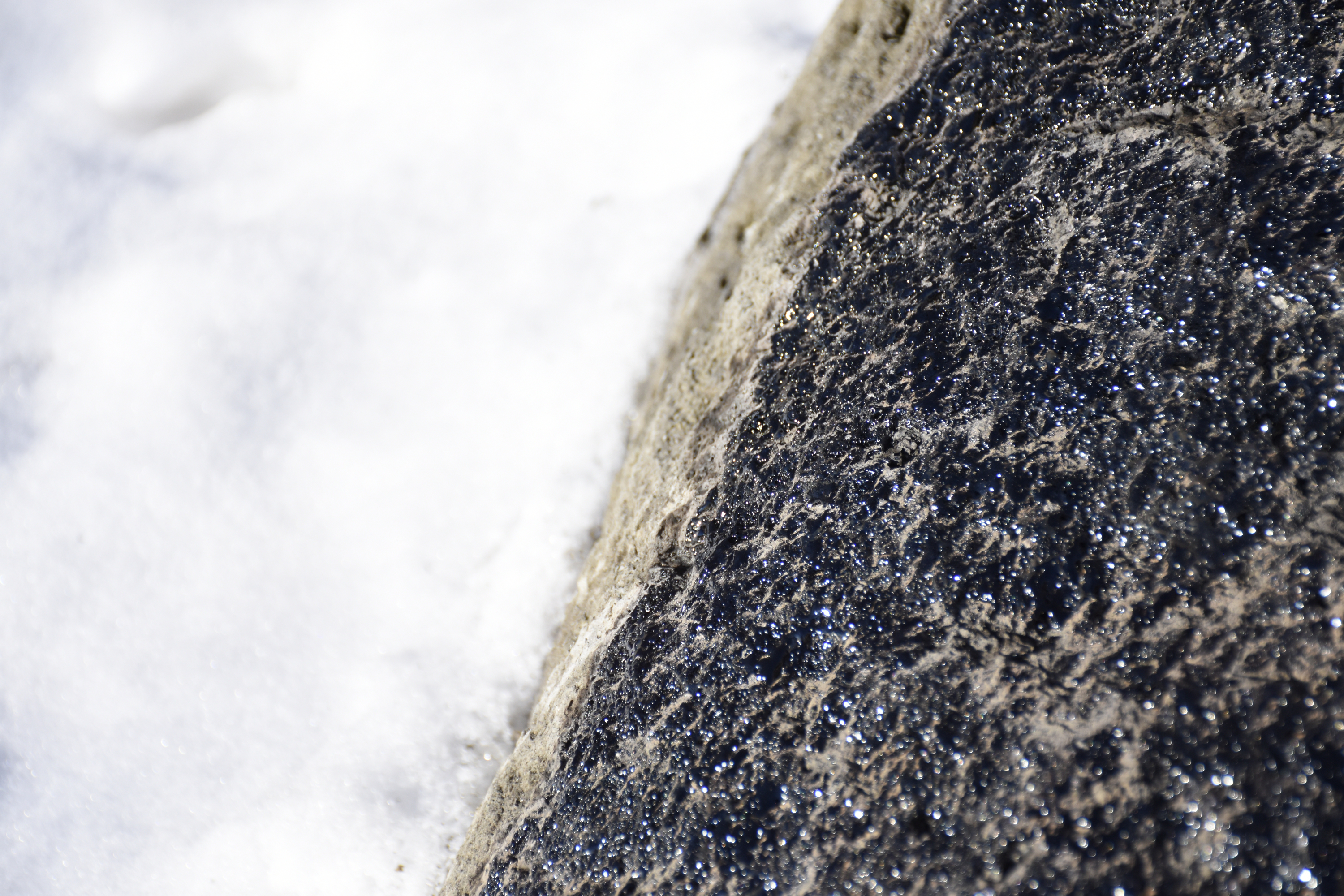→ scroll right
Melting Kussharo Caldera
2022
Stone of Kussharo Caldera, Sunlight
The Kussharo caldera in eastern Hokkaido was shaped by volcanic eruptions starting a million years ago. The artist, Madoka Chiba, visited Teshikaga town within the caldera, melting a stone she discovered using sunlight energy. This transformed the stone into magma, reverting it to its original form from a million years ago.
The artwork's process, reliant on sunlight, results in selective melting, leaving certain parts untouched based on the sun's angle. This piece was crafted from February 2nd to February 11th, 2022, a period marked by a low sun angle. The melted portions exhibit a black, glossy appearance, while others remain unaffected due to the sun's unfavorable angle for the lens. Trees to the stone's south cast shadows in the weak midday sunlight, preventing certain areas from melting. Consequently, the artwork distinctly reflects the spatial and temporal conditions of early February in its specific location.
Crafted as a public viewing sculpture, this artwork is freely accessible at the outdoor Yukimori Yagai Museum. Observers can connect with the historical essence of the location they stand in, experiencing it through the sculpture's vibrant play of intense light.
Melting Kussharo Caldera
2022年
屈斜路カルデラの石 太陽光
北海道東部にある屈斜路カルデラは、およそ100万年前に始まった火山噴火によって形成された。噴火は地形を作り出す。千葉麻十佳は屈斜路カルデラの上に横たわる弟子屈町へ行き、同地の石を溶かした。石を溶かすエネルギーは太陽光である。マグマとなった石は100万年前の姿を現し、時間を遡る。
本作は太陽光を用いているため、石の全ての箇所を溶かせるわけではない。つまり、太陽の角度によっては溶かすことができない部分がある。本作は2022年2月2日から同年2月11日の間に制作されており、この時期の太陽は日中でも低い。石が溶けた部分は黒く艶やかになるが、そうではない部分はレンズが焦点を合わせられる角度に太陽がなかったと言うことができる。また、本作の南側には木があり、正午からは太陽光が枝にかかる。減光した太陽光で石は溶けない。そのため、本作は「この場所の2月初旬の午前中」という空間と時間に否応なく呼応する。
本作は公開制作で作られた。鑑賞者は自分が今立っている場所がどういう歴史的な時間を経たのか、強烈な光とともに感じられるだろう。



